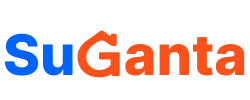
Introduction to Laravel: The PHP Framework for Web Artisans
Laravel is a free, open-source PHP framework for building web applications. Created by Taylor Otwell, it provides a powerful and elegant toolkit for developers, making common tasks like authentication, routing, and database interaction easy and enjoyable. Its popularity stems from its expressive syntax and robust set of features, which streamline the development process and help you build modern, scalable web applications quickly.
Key Features and Concepts 🛠️
Laravel's design is based on the Model-View-Controller (MVC) architectural pattern, which separates the application's logic, presentation, and data into three distinct components. This structure promotes clean, maintainable, and reusable code.
Model: This layer handles the application's data and business logic. It's responsible for interacting with the database, retrieving, updating, and deleting records. Laravel's Eloquent ORM (Object-Relational Mapper) makes this process simple, allowing you to interact with your database using expressive PHP syntax instead of raw SQL.
View: The view is the presentation layer that displays data to the user. Laravel uses its lightweight templating engine, Blade, to make it easy to create dynamic layouts and components. Blade allows you to use plain PHP in your views and provides powerful directives for things like loops and conditional statements.
Controller: The controller acts as the intermediary between the Model and the View. It receives user requests, processes them by interacting with the Model, and then sends the appropriate data to the View for rendering.
In addition to MVC, Laravel offers several other powerful features that make it a developer favorite:
Artisan: Laravel's built-in command-line interface (CLI) is an incredibly useful tool. Artisan automates repetitive tasks like generating boilerplate code for controllers and models, running database migrations, and managing your application's database. It drastically speeds up development time.
Built-in Authentication: Security is a top priority in web development, and Laravel simplifies it by providing a full, pre-built authentication system. With a single command, you get routes, views, and controllers for user registration, login, and password resets, saving you from writing this code from scratch.
Database Migrations: Migrations are a form of version control for your database. They allow you to define your database schema in PHP code, making it easy for multiple developers to collaborate and keep their databases in sync.
Routing: Laravel's routing system is simple yet powerful, allowing you to define clean and organized URLs for your application.
Security: Laravel includes built-in security features to protect your application from common threats, such as SQL injection, cross-site request forgery (CSRF), and cross-site scripting (XSS). It uses a Bcrypt hashing algorithm to securely store passwords, so they're never saved in plain text in the database.
Advantages of Using Laravel ✨
Laravel is a top choice for web development for many reasons:
Rapid Development: With its extensive set of pre-built features and tools like Artisan, Laravel allows developers to build and launch applications faster than ever before.
Scalability: Laravel is built with scalability in mind. It provides features like caching and a queue service that help your application handle high traffic and grow as your business does.
Active Community and Ecosystem: The Laravel community is large and very active, offering a wealth of documentation, tutorials, and packages to help you solve any problem.
Testing: The framework is designed for testing from the ground up, making it easier to write unit tests and ensure the quality and reliability of your code.
Cost-Effective: As an open-source framework, Laravel is free to use. This, combined with its accelerated development process, makes it a very cost-effective solution for building web applications.
Getting Started with Laravel 🚀
Getting into Laravel is surprisingly easy, even for beginners. Here's a basic roadmap:
Prerequisites: Make sure you have PHP, a web server (Apache or Nginx), and a database (MySQL or PostgreSQL) installed on your machine. You'll also need Composer, a dependency manager for PHP.
Installation: Use Composer to create a new Laravel project with a simple command: composer create-project laravel/laravel my-app-name. This will set up a new project with all the necessary dependencies.
Local Development Server: You can fire up a local development server by navigating into your project directory and running php artisan serve.
Explore: Dive into the project's directory structure. Look at the routes/web.php file to understand how routing works, and explore the app/Models, app/Http/Controllers, and resources/views directories to see the MVC structure in action.
Build Something: The best way to learn is by doing. Start by creating a simple CRUD (Create, Read, Update, Delete) application to get a feel for how all the pieces of the framework work together.
By leveraging its powerful features, elegant syntax, and a vibrant community, Laravel empowers developers to create incredible web applications with efficiency and style.





